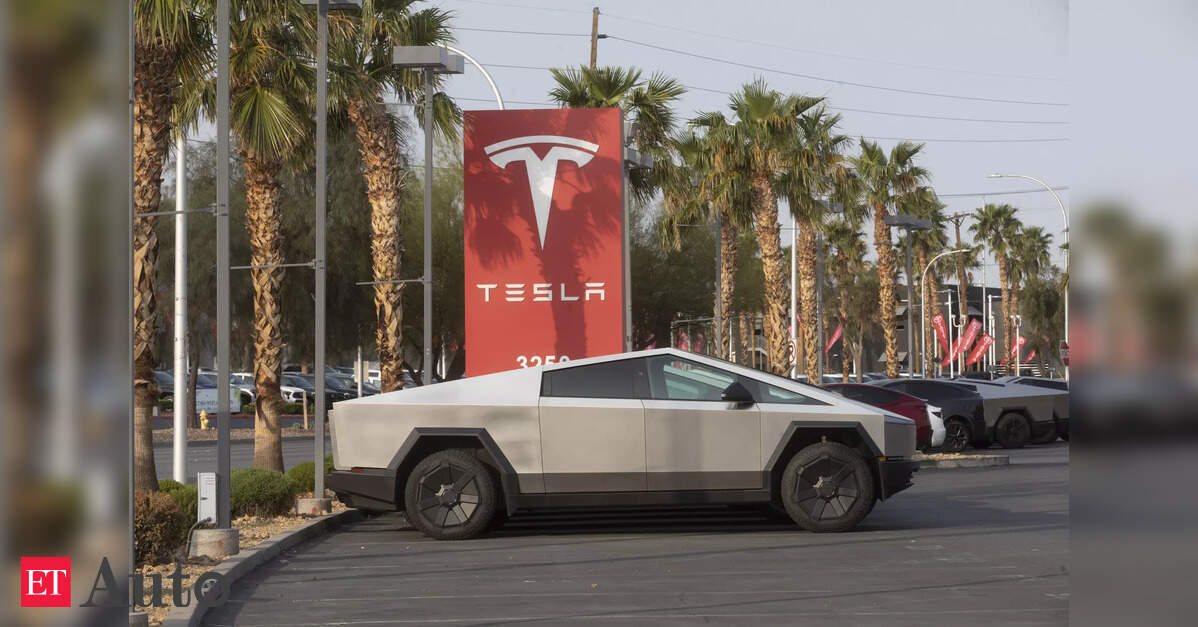Tesla's Strategic Focus on Robotaxis and Energy Business

Tesla is facing significant challenges, including a major shrinkage in sales across Europe and the U.S., which are attributed in part to Elon Musk’s previous political exposure. At the end of May, Musk officially distanced himself from his year-long alliance with President Trump, intensifying this departure with public criticism. This move aimed to diminish the negative public sentiment and instances of vandalism against Tesla vehicles and owners that had emerged previously. Despite law enforcement efforts, the lack of deterrents for such acts highlighted a grim future for Tesla if the perception of random attacks persisted. However, Musk’s timely exit from the political scene, coupled with new events like the Iran-Israel war and instances of vandalism against competitors’ robotaxis, may help nullify his political impact on Tesla.
Tesla’s sales in Europe experienced a devastating decline, plummeting by nearly half in April 2025, from 14,228 to just 7,261 units. This decline occurred despite an overall upward trend in the European EV market. Competitors like Volkswagen Group and China’s BYD largely benefited from Tesla’s downturn. This situation was exacerbated by the European Union’s media portrayal of the Trump-Musk alliance. While the EU market for electrified cars saw a 20% year-over-year increase from January to April 2025, Tesla missed out on this growth. Similarly, the UK market, with a 22.8% growth in electrified vehicles, saw Tesla suffer a 36% year-over-year sales drop in May. A major contributing factor to Tesla’s struggles in Europe is its complete lack of hybrid (HEV) vehicle offerings, which remain the most popular category, constituting 35.3% of the European market share as of May 2025, compared to 15.3% for battery electric (BEV) and 7.9% for plug-in hybrid (PHEV) vehicles.
In the U.S., Tesla sales dropped by 16% in April 2025, largely due to vandalism deterring potential customers and a general cooling of enthusiasm for EVs. New EV registrations in the U.S. fell by 4.4% year-over-year in April, a stark contrast to the stronger performance in Europe, despite Europe’s overall sales advantage. To counteract these substantial sales shrinkages in both the U.S. and EU, Tesla is heavily relying on its autonomous driving efforts. Tesla’s Full Self-Driving (FSD) is currently rated Level 2 on the SAE scale, lagging behind competitors like Zoox and Waymo, which offer Level 4 fully driverless taxis in limited areas. The upcoming launch of Tesla’s robotaxis in Austin, scheduled for June 22nd or 28th, using Model Y vehicles, will be a critical test for the company. Despite Elon Musk’s past over-promises regarding autonomous driving, a successful deployment of robotaxis could significantly boost Tesla’s valuation, with one analyst projecting a potential increase to over $2 trillion by late 2026.
Beyond vehicle sales and autonomous driving, Tesla exhibits strengths in its energy storage division and humanoid robotics. Despite prevailing higher interest rates, Tesla’s energy storage business is accelerating. In 2024, the energy division generated $2.6 billion in gross profit, more than double the 2023 figure, primarily driven by its modular Megapack battery solution. Q1 2025 saw a 154% year-over-year surge in energy storage deployment, reaching 10.5 GWh. Total revenue for storage and energy generation grew by 67% year-over-year to $2.7 billion, with future growth signaled by a recent $557 million energy storage deal in China. On the robotics front, Tesla’s Optimus humanoid robot is making notable progress with its Gen 2 phase, demonstrating enhanced mobility, agility, and walking speed. Elon Musk has hinted at future improvements for Gen 3, and Tesla has the potential to scale Optimus production to 100,000 units in its factories, though achieving practical, granular interaction with reality remains a complex challenge.
Ahead of the robotaxi launch, TSLA stock has seen fluctuations, down 2% over the week but up 36% over the last three months, trading at $322.23. The average price target from analysts is $306.04 per share, with varying recommendations. Tesla’s price-to-earnings (P/E) ratio stands at a high 177.22, significantly above the consumer discretionary sector average of 25.64, reflecting the speculative nature of its ventures into robotaxis, humanoid robots, and energy solutions.
You may also like...
Diddy's Legal Troubles & Racketeering Trial

Music mogul Sean 'Diddy' Combs was acquitted of sex trafficking and racketeering charges but convicted on transportation...
Thomas Partey Faces Rape & Sexual Assault Charges

Former Arsenal midfielder Thomas Partey has been formally charged with multiple counts of rape and sexual assault by UK ...
Nigeria Universities Changes Admission Policies

JAMB has clarified its admission policies, rectifying a student's status, reiterating the necessity of its Central Admis...
Ghana's Economic Reforms & Gold Sector Initiatives

Ghana is undertaking a comprehensive economic overhaul with President John Dramani Mahama's 24-Hour Economy and Accelera...
WAFCON 2024 African Women's Football Tournament

The 2024 Women's Africa Cup of Nations opened with thrilling matches, seeing Nigeria's Super Falcons secure a dominant 3...
Emergence & Dynamics of Nigeria's ADC Coalition

A new opposition coalition, led by the African Democratic Congress (ADC), is emerging to challenge President Bola Ahmed ...
Demise of Olubadan of Ibadanland
Oba Owolabi Olakulehin, the 43rd Olubadan of Ibadanland, has died at 90, concluding a life of distinguished service in t...
Death of Nigerian Goalkeeping Legend Peter Rufai

Nigerian football mourns the death of legendary Super Eagles goalkeeper Peter Rufai, who passed away at 61. Known as 'Do...


